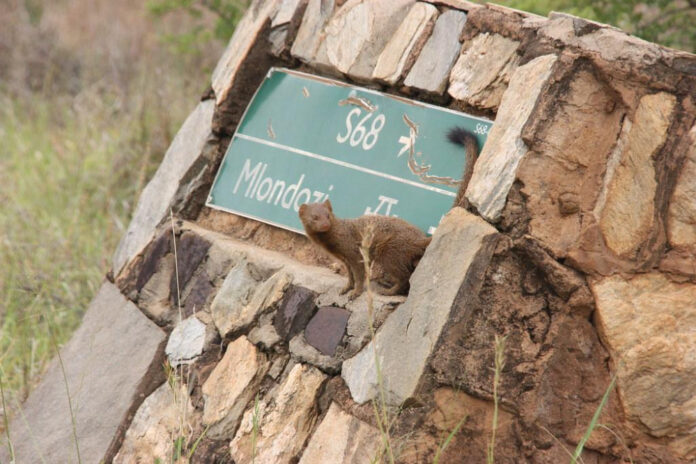Hey there, ever heard of those sneaky little creatures known as mongooses? Well, if you’re in Hawaii, you might have spotted them scuttling around here and there. But did you know that these creatures aren’t actually native to the islands? Stick around as we explore the curious case of the mongoose invasion in Hawaii.
Table of Contents
- Exploring the History of Mongoose in Hawaii
- Environmental Impact of Mongoose in Hawaii
- Controlling Mongoose Population in Hawaii
- The Future of Mongoose Management in Hawaii
- Q&A
- In Retrospect
Exploring the History of Mongoose in Hawaii
Hawaii’s history with mongoose dates back to the late 1800s when the small mammals were introduced to the islands to control the rat population in sugar cane fields. Unfortunately, the plan backfired, and the mongoose quickly became an invasive species, causing significant damage to indigenous bird populations and other native species. Despite their negative impact on the ecosystem, the mongoose has become a part of Hawaii’s wildlife landscape.
Today, the mongoose can be found across all the main Hawaiian islands, where they continue to thrive in various habitats. While their introduction to Hawaii was intended to solve a specific problem, it ultimately led to a different environmental issue. The mongoose’s presence serves as a cautionary tale about the potential consequences of introducing non-native species to an ecosystem.
Environmental Impact of Mongoose in Hawaii
Many people are unaware of the . While these small mammals may seem harmless, they actually pose a significant threat to the native wildlife of the islands. The introduction of mongoose to Hawaii has led to devastating consequences for the local ecosystem, particularly for bird species.
Effects of Mongoose on the Environment in Hawaii:
- Mongoose are invasive predators that prey on native bird eggs and hatchlings, leading to a decline in bird populations.
- They also consume a variety of other native species, including insects, small mammals, and reptiles, further disrupting the delicate balance of the island’s ecosystem.
Efforts to Mitigate the Impact:
- Conservationists and wildlife experts are working to control mongoose populations through trapping and other management strategies.
- Education and outreach programs aim to raise awareness about the negative effects of mongoose and encourage responsible pet ownership to prevent further introductions of invasive species.
Controlling Mongoose Population in Hawaii
Hawaii is known for its lush landscapes, diverse wildlife, and unique ecosystem. However, the introduction of the mongoose to the islands has caused significant disruption to the native species and environment. Originally brought to Hawaii in the late 1800s to control the rat population in sugarcane fields, the mongoose has since become a problematic invasive species.
Controlling the mongoose population in Hawaii has become a priority for wildlife conservation efforts. Here are some methods being used to address this issue:
- Trapping: Wildlife experts and conservationists use live traps to capture and remove mongooses from sensitive habitats.
- Fertility Control: Research is being conducted to develop fertility control methods to reduce mongoose populations in a humane and effective manner.
- Public Awareness: Educating the public about the negative impact of mongoose on Hawaii’s ecosystems is crucial in garnering support for conservation efforts.
The Future of Mongoose Management in Hawaii
Mongooses were first introduced to Hawaii in the late 1800s in a misguided attempt to control the rat population in the sugarcane fields. However, this move has had disastrous effects on the native wildlife, particularly the ground-nesting birds, which are easy prey for the mongoose. As a result, the management of mongoose populations has become a major concern in Hawaii, with experts and authorities working towards finding sustainable and effective methods for controlling their numbers.
One potential approach for managing mongoose populations in Hawaii is the use of fertility control methods. By applying techniques such as immunocontraception, researchers are looking for ways to reduce the mongoose population without resorting to lethal measures. Additionally, the implementation of targeted trapping and removal programs in sensitive areas can also help mitigate the impact of mongooses on vulnerable native species. These efforts are crucial for preserving the unique biodiversity of Hawaii and ensuring the survival of its endemic wildlife.
Q&A
Q: What is a mongoose and how did it end up in Hawaii?
A: A mongoose is a small carnivorous mammal native to Asia and Africa. It was introduced to Hawaii in the late 1800s to control the rat population in sugarcane fields.
Q: Are mongooses causing problems in Hawaii?
A: Yes, mongooses are considered an invasive species in Hawaii and have negatively impacted native bird and reptile populations.
Q: What is being done to control the mongoose population in Hawaii?
A: Various efforts, such as trapping and poisoning, are being employed to control the mongoose population in Hawaii. Additionally, education and public awareness campaigns are being implemented to prevent further spread of the species.
Q: Can mongoose infestations be eradicated in Hawaii?
A: While eradication of mongooses in Hawaii is a challenging task, ongoing efforts are being made to manage and reduce their population in key areas.
Q: Are there any potential ecological benefits to having mongooses in Hawaii?
A: While mongooses are considered harmful to native wildlife, they have been known to prey on invasive species such as rats and insect pests, potentially providing some benefits to the ecosystem. However, the negative impacts on native species outweigh any potential benefits.
In Retrospect
So, there you have it – Hawaii’s fascinating mongoose population. From their introduction to the islands to their impact on the ecosystem, these little critters have certainly made their mark on Hawaii’s landscape. Whether you’re a fan of these agile creatures or see them as a nuisance, there’s no denying that the mongoose is a memorable part of Hawaii’s natural history. Keep an eye out for them on your next trip to the islands – you never know when you might spot one darting across the road or chasing after a critter in the wild. Aloha, and mahalo for reading!
Auto Amazon Links: No products found.



